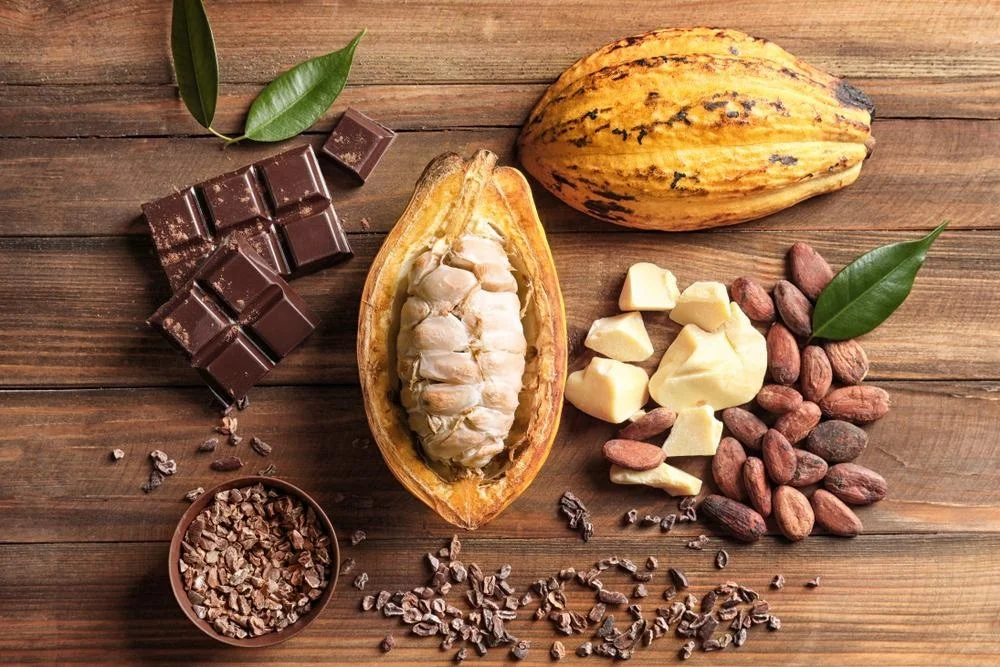Cocoa futures reached a fresh record in New York as the market grapples with renewed supply concerns, increasing the chances that the high costs already plaguing chocolatiers and consumers will worsen.
Futures rose as much as 5.5% to $11,925 a ton on Monday, topping the prior record of $11,722 in April. Prices have almost tripled this year, forcing candy makers like Hershey Co. to boost prices.
Prices soared earlier this year as weak harvests in West Africa — the top producing region — plunged the world into a third straight supply deficit. After cooling, the rally recently regained momentum as adverse weather further threatened farms there, limiting the chance to rebuild already low global stockpiles.
While the main-crop harvest for this season has fared relatively well, the outlook for the smaller mid-crop that typically begins in April has deteriorated following heavy rains that flooded farms. Also, the seasonally dry Harmattan winds that can dry soil and stress crops are intensifying.
“The trigger was the anticipated weather influence on the Ivory Coast and Ghana mid-crops, as well as the Harmattan arriving to add further potential damage,” said Nicko Debenham, a sustainability adviser specializing in cocoa. That means there are now expectations the current season will end in a global deficit, a shift from previous estimates of a surplus, he said.
Cocoa arrivals at Ivory Coast ports this season, while still outperforming the prior year, are below the average pace for the first time since mid-November after declining for three straight weeks, according to ADM Investor Services analyst Mark Bowman.
“Arrivals tend to peak for the year in early November, but the slowdown raises additional concerns that this year’s crop, while better than last year, will not be enough to avoid another production deficit this year,” Bowman wrote in a Monday note, adding that the Harmattan wind is expected to bring warmer and dryer conditions to West Africa over the next seven to 10 days.
That comes as the expected La Niña weather pattern, which would likely have been favorable to cocoa crops, has not yet emerged. Severe dry Harmattan seasons typically do not occur during a weak La Niña, Jim Roemer, a meteorologist with Best Weather Inc., wrote in a note to clients.
Meanwhile, US exchange inventories have continued to drop, reflecting continued supply tightness after a massive deficit in the prior season left chocolate companies draining stockpiles. That has helped turn hedge funds more bullish on prices in both New York and London recently.
Traders have also faced mounting costs to maintain positions, which forced a wave of bets to be closed out. Aggregate open interest fell to a decade-low in November, and the thinning liquidity could continue to exacerbate market volatility ahead.
Cocoa’s supply challenges have been compounded by longstanding industry problems, including crop disease and a legacy of low farmer pay. Newly planted trees also take a few years to bear pods, delaying a meaningful production rebound.
Prices are likely to ease next year as the rally encourages more production and curbs consumption, Rabobank said recently. The latest surge has also pushed cocoa’s 14-day relative strength index well above 70, a sign that prices rose too far, too fast, and may be due for a correction.
Higher chocolate prices have begun to weigh on inflation-pressed shoppers. Still, global demand is seen growing over the long term, with cocoa expected to be the fastest-growing food group through 2050 as more regions become wealthier and “get a taste for chocolate products,” according to a Monday report from BloombergNEF.
Source: Bloomberg


